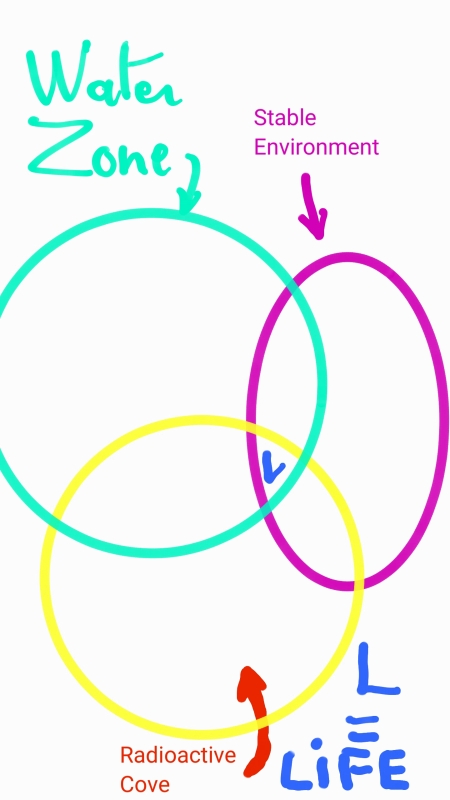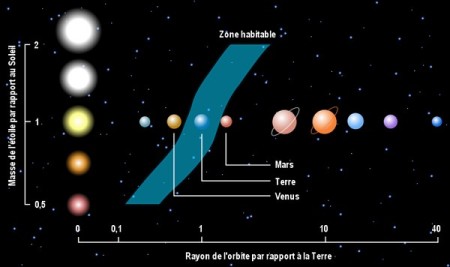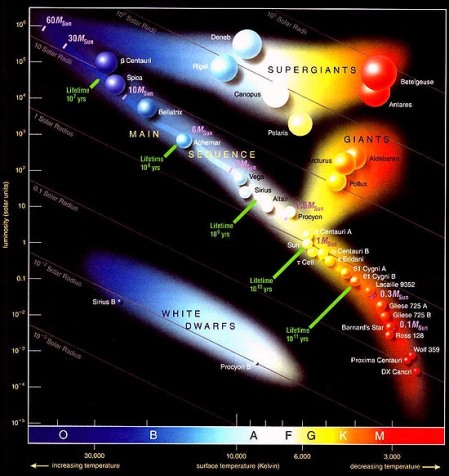Our giant galaxy is at least ten billion years old. It has 100 billion stars. Many of them second generation stars. It would seem most stars have planets, and many of these fall in the so-called habitable zone. In multiple star systems, some planets will fly away. Still, there may be 40 billion potential Earths in the Milky Way. Yes, and No.
However, ten billion years, over (more than) 100 billion planetary systems, gives more than plenty of time for a civilization to expand throughout the galaxy. Yes, throughout the galaxy. So aliens should have visited Sol, but all indications are that they did not: life on Earth is indigenous to Earth, or the Earth-Mars system.

Why We Are Alone: Earth Is Both Very Watery & Very Radioactive, Deep Inside. The resulting massive tectonic recycling creates a massive churning of carbon, preventing unbearably hot Earths, or snowball Earths escapades into conditions reducing life to bacterial life….
How did Earth get her enormous radioactive fission core? A mystery. It seems that Venus did not. Indeed, Venus has no self-generated magnetosphere (differently from Mercury, Jupiter, or Saturn; Mars is too small to have a churning metallic core, so has no magnetosphere, thus CMEs tear the Martian atmosphere away, in particular water). Instead Venus has an induced magnetosphere. A pathetic device that could not prevent Venus from being deprived of all its hydrogen, hence water, torn by the solar wind, especially during Coronal Mass Ejections CME).
![The Sort of Comet from Hell On Top Is Venus. Earth, The Blue World, Is Below. Earth, With Her Complex Magnetosphere Created By Her Churning Liquid Metal Radioactive Core: Part Of The Reason Why Venus Melts Lead, & Earth Harbors Civilization. [Courtesy ESA.]](https://patriceayme.files.wordpress.com/2016/02/life-4.jpg?w=450)
The Sort of Comet from Hell On Top Is Venus. Earth, The Blue World, Is Below. Earth, With Her Complex Magnetosphere Created By Her Churning Liquid Metal Radioactive Core: Part Of The Reason Why Venus Melts Lead, & Earth Harbors Civilization. [Courtesy ESA.]
That’s 1/3000 of the speed of light. The galaxy is 100,000 light years across. So, with existing technology, primitive technology of the 1960s, we could cross the galaxy in 300 million years.
Now, of course, faster tech is perfectly imaginable, such as thermonuclear propulsion. (Thermonuclear propulsion may be easier to achieve than a contained nuclear fusion motor, because containment is the most major problem of controlled fusion; an uncontained engine would be half way between an H-bomb and ITER, and pure fusion is clean; actually NASA finances, all too modestly, such research.) Whereas the temperature in a fission reactor will be at most 3000 degree Centigrade, thermonuclear fusion could reach 100 million degrees, enabling an impulsion 10,000 times greater. Thus mastery of thermonuclear fusion would allow to cross the galaxy in a few million years.
So, if there was a civilization barely more advanced technologically than we are, it would have established a galactic empire in a few million years. It should have visited our blue planet, detectable from thousands of parsecs (with existing technology not deployed by the grotesque, imbecilic plutocrats who rule us through those countless obsequious greedy critters which most politicians are).
The definition of the traditional habitable zone is naive: it is only about temperature. Temperature has to be just right, so that there is liquid water on the surface. And, naively, that is thought to mean holding a particular distance relative to a star. However it takes more than temperature to keep a planet habitable. Mars had an ocean, but lost its surface water, a little bit at a time, from repeated Coronal Mass Ejections (CME). A CME consists in a super active flame jetting out from the sun. If a CME hit Earth now, much, if not most electric circuitry on Earth would fail.

Radioactive Elements, Being The Densest, Sink Towards The Star During The Planetary System Formation. (Observed So far.). Oxygen & Hydrogen, With 5% Average Nuclear Mass Migrate Out
Venus does not have a strong magnetic field either. Why? We don’t know. OK, Venus doesn’t rotate very much.
Earth, though rotates mightily, stabilized by her big Moon, and her high density (because of pressure, Earth is denser overall than Mercury, although the latter seems to be a planetary core…)
The Earth magnetic field is a shield, and it is created by the nuclear fission engine at the core of the Earth (it makes the surface of Earth’s core hotter than the surface of the sun! That makes a metallic iron ocean above churn violently, and generate the magnetic field… And also plate tectonics, which recycles carbon deep in the mantle, preventing it to sit in the atmosphere, as in the case of Venus!)
Thermal hot spots are indirectly nuclear fission activated, but before three billion years ago, thermal hot spots driven directly by ionizing and mutagenic radiation from surface nuclear reactors, were probably ubiquitous. Thus, to have the four billion of years needed to develop ADVANCED native life, with all the mutations it entails, one needs to have both a nuclear reactor inside a planet AND the planet enjoying surface water for four billion years.
A tough, and rare call. Moreover, life has to escape crashing dwarf planets, migrating Super-Jupiters, super stellar Coronal Mass Ejections (all the more frequent in Red Dwarfs), close encounters with passing stars, gamma ray bursts, supernovae, colliding black holes, super stars exploding, central galactic black hole eruption (many of these catastrophes were very recently revealed, and did not percolate yet to We The People). To let life develop over four billion years, we need an extraordinary confluence of circumstances. (And when I say four billion, that’s generous: the “Cambrian explosion” when animals appeared in a great number of types of species, was only 540 million years ago. Moreover, life on Earth may have been accelerated by being started on Mars, at a time when Earth was still way too hot for sophisticated chemistry, and then transported by meteorites (that this strange method of life transportation could still be done to this day, has been demonstrated, by carefully analyzing meteorites of Martian origin).

Life, Sustained Long Enough For Advanced Animals? Unlikely. The Milky Way Is Ours. And Oblivion Watches Over Us, Not Tenderly.
So expect life to be very frequent in the galaxy, and habitable planets to be many. As long as one is talking about bacterial life functioning on DNA like system (the details will be different, as post-DNA life was already synthesized in the lab!)
But little green men, Kzins and Doctor Spock? Not a chance. If they happen some day, they will be our descendants. That we are alone changes the stakes. We are not just threatening civilization, with our childish, yet lethal and atrocious antics, but we are threatening to annihilate the one and only crown of creation.
Patrice Ayme’






